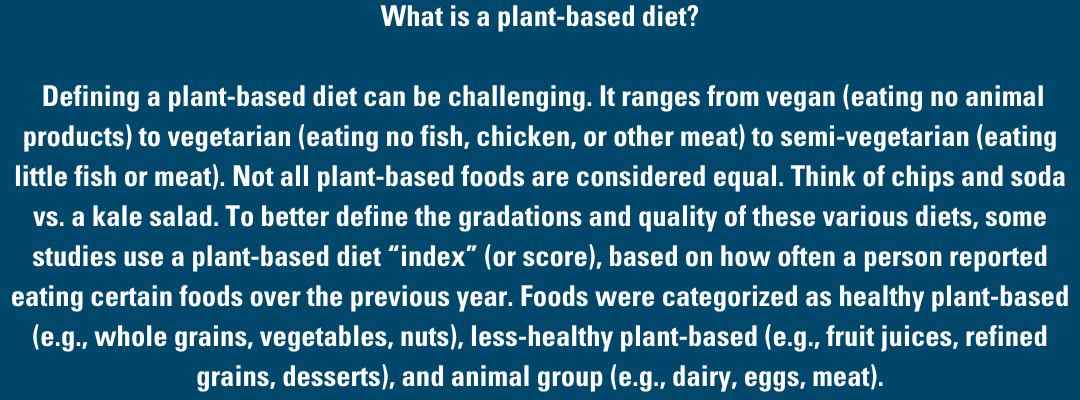
A plant-based diet is a great choice for a beginner's diet. It is also less expensive than a more animal-based diet, and it contributes to the stability of the global climate. This type of diet has its pros and cons. Before you make the change, it is important to do your research to determine which diet is best for you.
Plant-based diets contribute towards a stable global environment
Adopting a plant-based lifestyle is good for your health as well as the environment. By eating more plants, you can reduce greenhouse gas emissions by half and reduce the use of fertilizers, which contribute to the destruction of the environment. It is possible to save significant amounts of freshwater and farmland. Experts recommend a flexible, vegetarian diet with plenty of fruits, vegetables, plant-based protein and minimal red meat.
Although it can be difficult to adopt a plant-based diet, there are many advantages. One of the biggest is reduced risk of cancer. The World Cancer Research Fund suggests eating a lot of plant-based foods. The American Institute for Cancer Research suggests eating minimally processed foods. There are many types of diets you can choose from, such as pescatarian or flexitarian. This depends on what your preferences are.

They are less perishable that leafy greens or fruit counterparts
Plant-based diets for beginners are less perishable that their leafy-green or fruit counterparts. This makes it a practical choice for anyone who is looking for a healthy, nutritious diet. These foods are also easy to prepare, compared to many other types. Many of these foods are readily available in grocery stores' produce and grab-and go sections.
Popular eating options are the plant-based and vegan diets. Studies show that more than one fifth of Americans are cutting back their meat intake. And one in four people have a plant diet. Many restaurants now offer plant-based dishes.
They are more affordable than animal-based diets
Plant-based meals can be cheaper than those made from animal products if you are just starting a vegan lifestyle. One study showed that plant-based meals cost less than half as much as meat per day. Additionally, they are easier to prepare. While many studies have focused on health benefits, recent research shows that plant-based diets can also be cost-savings.
Plant-based diets come with fewer restrictions than animal diets. Beginners can therefore start on a plant-based diet and not have to give up their favorite foods. They are also easy to prepare and don't require calorie counting or complicated meal plans. Plant-based dishes are simpler to prepare, making them more nutritious and convenient than recipes made from meat and milk. Many supermarkets offer ready-to-eat prepackaged meals that are easy to grab and use.

They can cause nutritional deficiencies
You may be concerned about nutritional deficiencies, especially if you're new in a plant based diet. This diet does not include animal products, and is primarily made up of whole grains, vegetables and fruits, as well as legumes, fruits and nuts. Plant-based diets offer many benefits and are simple to follow. There are no set rules regarding what you can or cannot eat. Additionally, you have the freedom to choose the types of foods that you would like to include in your daily diet.
A plant-based diet should be accompanied by a balanced, varied diet. Tofu, beans, dark green leafy lettuce, and tofu are all good sources of calcium. Vitamin D-fortified cereals may also be helpful. Whole grains, on the other hand, can help you get the necessary iron and zinc. You should also take vitamin B12 supplement with your food.
FAQ
How much should I weigh for my height and age? BMI chart & calculator
Use a BMI calculator to determine how much weight is needed to lose. Healthy BMI ranges between 18.5 to 24.9. If you want to lose weight, then you should aim to drop about 10 pounds per month. Simply enter your height/weight into the BMI calculator.
This BMI chart can help you find out if or not you are obese.
What are the 7 tips to have a healthy life?
-
Take care of your health
-
Exercise regularly
-
Rest well
-
Get plenty of water.
-
Get enough rest
-
Be happy
-
Smile often
How do I determine what's good?
Listening to your body is essential. Your body knows what you need when it comes time to eat, exercise, and get enough rest. To be healthy, you must pay attention and not push yourself too hard. You must listen to your body to ensure you are healthy.
Are there 5 ways to have a healthy lifestyle?
What are 5 ways to live a healthy lifestyle?
Healthy lifestyles include eating right, exercise regularly, getting enough rest, managing stress, having fun, and eating healthy. You should avoid processed foods, sugar, or unhealthy fats. Exercise helps burn calories and strengthens muscles. Getting enough sleep improves memory and concentration. Stress management helps reduce anxiety and depression. Fun is key to staying young and vibrant.
What's the problem with BMI?
BMI is the acronym for Body Mass Index. It measures body fat based upon height and weight. Here is how to calculate BMI using the following formula.
The weight of a kilogram divided by its squared height in meters.
The result is expressed as a number from 0 to 25. A score of 18.5 indicates that you are overweight and a score of 23 indicates that you are obese.
A person with a body mass index of 22 and a weight of 100 kg and a height 1.75m will have a BMI.
Statistics
- According to the 2020 Dietary Guidelines for Americans, a balanced diet high in fruits and vegetables, lean protein, low-fat dairy and whole grains is needed for optimal energy. (mayoclinichealthsystem.org)
- This article received 11 testimonials and 86% of readers who voted found it helpful, earning it our reader-approved status. (wikihow.com)
- The Dietary Guidelines for Americans recommend keeping added sugar intake below 10% of your daily calorie intake, while the World Health Organization recommends slashing added sugars to 5% or less of your daily calories for optimal health (59Trusted (healthline.com)
- nutrients.[17]X Research sourceWhole grains to try include: 100% whole wheat pasta and bread, brown rice, whole grain oats, farro, millet, quinoa, and barley. (wikihow.com)
External Links
How To
What does the word "vitamin" mean?
Vitamins are organic compounds found naturally in food. Vitamins allow us to absorb nutrients from food. The body cannot make vitamins; therefore, they must be obtained from food.
There are two types: water-soluble and fat-soluble vitamins. Water-soluble vitamins dissolve quickly in water. Vitamin C,B1(thiamine), B2 (2riboflavin), and B3 (3niacin), as well as vitamin C,B1, B2 (riboflavin), and B3 (niacin), vitamin B6 (pyridoxine), vitamin folic acid (biotin), pantothenic, and choline are examples. Fat-soluble vitamins are stored within the liver and in fatty tissue. Examples include vitamin D, E, K, A, and beta carotene.
Vitamins can be classified by their biological activity. There are eight major groups of vitamins:
-
A – Essential for normal growth, and the maintenance of good health.
-
C - important for proper nerve function and energy production.
-
D - Vital for healthy bones and teeth
-
E is needed for good reproduction and vision.
-
K - Essential for healthy muscles and nerves.
-
P - Vital for strong bones and teeth.
-
Q - Aids in digestion and absorption.
-
R - Required for red blood cell production
The recommended daily intake (RDA), of vitamins varies with age, gender and physical conditions. The U.S. Food and Drug Administration (FDA) sets the RDA values.
For adults aged 19 and older, the RDA for vitamin B is 400 micrograms daily. For fetal development, pregnant women require 600 micrograms per daily. Children ages 1-8 require 900 micrograms per day. Children under 1 year old require 700 micrograms daily, while infants over one year old need 500 micrograms every day. This decreases between 9 and 12 months.
Children aged 1-18 require 800 micrograms of sugar per day, while those who weigh more than 1200 need 1000. For their nutritional needs, underweight children need 1200 mg per day.
Children aged 4-8 who have anemia are required to consume 2200 micrograms of Vitamin C daily.
2000 micrograms are required daily for good health in adults over 50. Women who are pregnant or breastfeeding need 3000 micrograms per day due to increased nutrient requirements.
Adults over 70 require 1500 micrograms each day, since they lose approximately 10% of muscle mass each decade.
Women who have been pregnant or are lactating require more than the RDA. Pregnant woman need 4000 micrograms daily in pregnancy and 2500 per day after childbirth. Breastfeeding mothers need 5000 micrograms per day when breast milk is being produced.